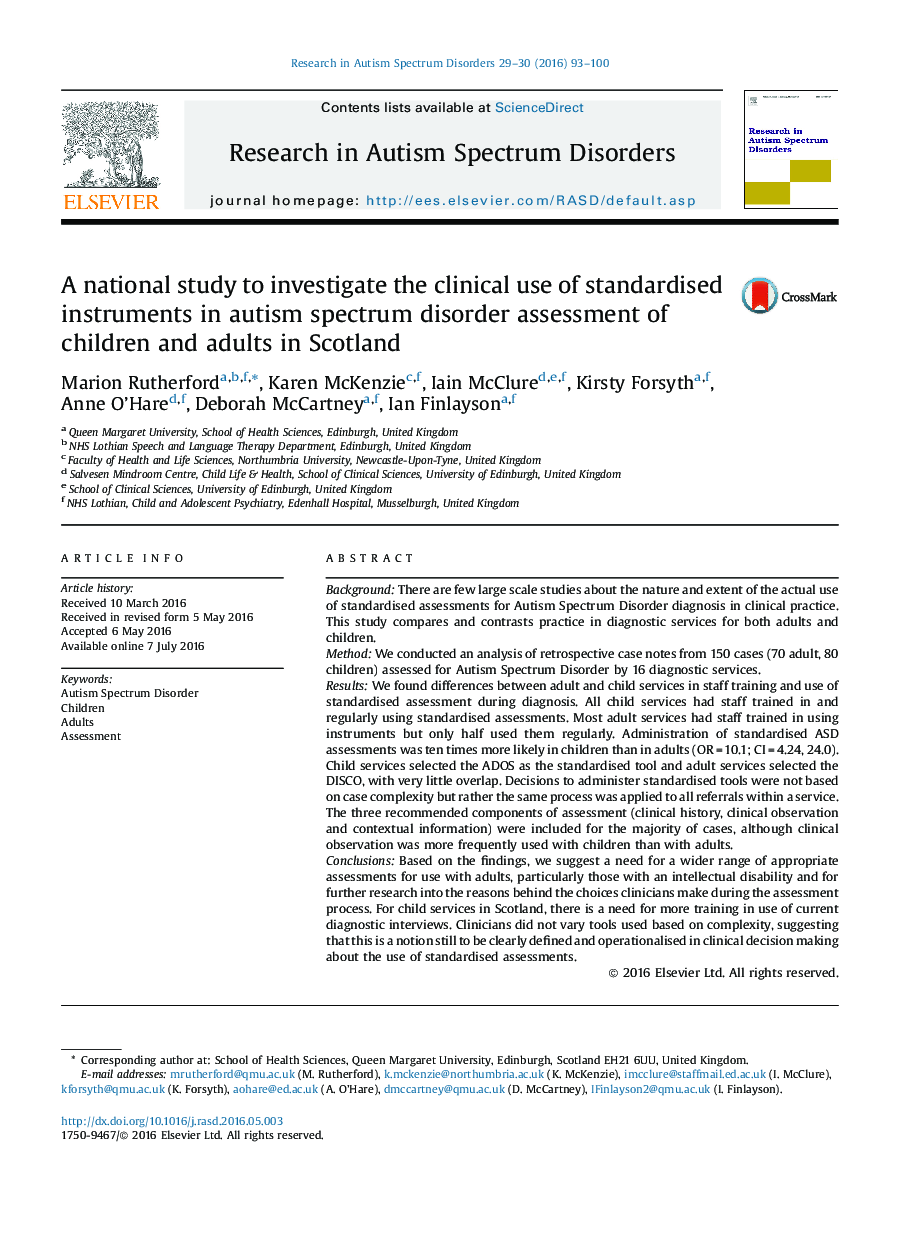| Article ID | Journal | Published Year | Pages | File Type |
|---|---|---|---|---|
| 369909 | Research in Autism Spectrum Disorders | 2016 | 8 Pages |
•All child and most adult services had at least one clinician trained to use a standardised ASD assessment.•Administration of standardised ASD diagnostic assessments was ten times more likely in children than in adults.•ADOS was used almost exclusively by child services and DISCO was used in adult services. Other recommended tools were rarely or never used.•The concept of case complexity remains undefined and this did not influence clinical decisions over administering standardised tools or not.•Three recommended components of assessment (clinical history, clinical observation and contextual information) were used in most cases.
BackgroundThere are few large scale studies about the nature and extent of the actual use of standardised assessments for Autism Spectrum Disorder diagnosis in clinical practice. This study compares and contrasts practice in diagnostic services for both adults and children.MethodWe conducted an analysis of retrospective case notes from 150 cases (70 adult, 80 children) assessed for Autism Spectrum Disorder by 16 diagnostic services.ResultsWe found differences between adult and child services in staff training and use of standardised assessment during diagnosis. All child services had staff trained in and regularly using standardised assessments. Most adult services had staff trained in using instruments but only half used them regularly. Administration of standardised ASD assessments was ten times more likely in children than in adults (OR = 10.1; CI = 4.24, 24.0). Child services selected the ADOS as the standardised tool and adult services selected the DISCO, with very little overlap. Decisions to administer standardised tools were not based on case complexity but rather the same process was applied to all referrals within a service. The three recommended components of assessment (clinical history, clinical observation and contextual information) were included for the majority of cases, although clinical observation was more frequently used with children than with adults.ConclusionsBased on the findings, we suggest a need for a wider range of appropriate assessments for use with adults, particularly those with an intellectual disability and for further research into the reasons behind the choices clinicians make during the assessment process. For child services in Scotland, there is a need for more training in use of current diagnostic interviews. Clinicians did not vary tools used based on complexity, suggesting that this is a notion still to be clearly defined and operationalised in clinical decision making about the use of standardised assessments.
